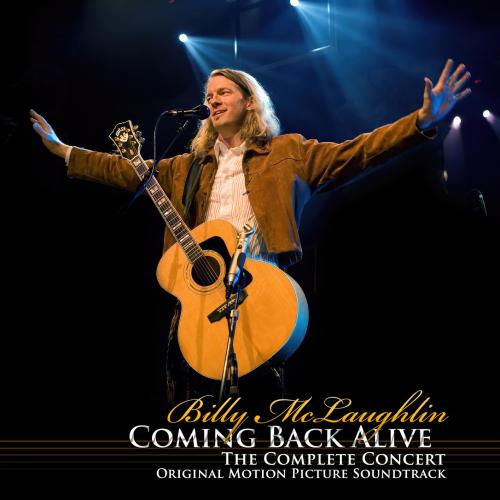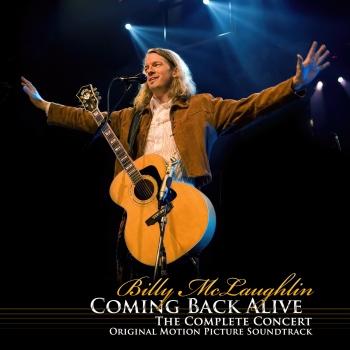
Coming Back Alive: The Complete Concert (Original Motion Picture Soundtrack) Billy McLaughlin
Album info
Album-Release:
2023
HRA-Release:
21.07.2023
Album including Album cover
- 1 Helms Place (Coming Back Alive Version) 05:32
- 2 Tapdaddy (Coming Back Alive Version) 05:09
- 3 Don't Know How to Die (Coming Back Alive Version) 06:29
- 4 Into the Light (Coming Back Alive Version) 03:41
- 5 Church Bells (Coming Back Alive Version) 03:55
- 6 Away with Words (Coming Back Alive Version) 05:03
- 7 Fingerdance (Coming Back Alive Version) 02:44
- 8 Hold on to Forever (Coming Back Alive Version) 05:59
- 9 Crazy Love (Coming Back Alive Version) 05:33
- 10 Safe Within the Storm (Coming Back Alive Version) 06:26
- 11 By My Spirit (Coming Back Alive Version) 05:44
- 12 Keepin' On (Coming Back Alive Version) 10:48
- 13 Or Did I Love Ya (Coming Back Alive Version) 09:19
- 14 The Bow and the Arrow (Coming Back Alive Version) 05:41
Info for Coming Back Alive: The Complete Concert (Original Motion Picture Soundtrack)
Emmy Award Fingerstyle Acoustic Guitar Musician. For decades, Billy McLaughlin astounded audiences around the world with his complex and rhythmic music.
After being diagnosed with focal dystonia of his right hand, musician Billy McLaughlin relearned how to play the guitar—with his left. The incredible moment was captured in his legendary Coming Back Alive concert.
...McLaughlin set another goal: to perform with an orchestra in front of a live audience. "It was such a test for me to see if I could handle all that," he says. At that time, in 2004, some of McLaughlin's fans approached him about documenting this comeback concert. Soon a documentary crew joined him on his journey back to performing. "They wanted to see if I could pull it off," he says. "At the point when they started shooting, I was awful. It was crazy."
In late 2005, McLaughlin felt confident enough to attempt a first performance. The concert, aptly named "Coming Back Alive," consisted of a mixture of pieces, many composed by McLaughlin after his struggle with dystonia. Of his song "Don't Know How to Die," he says, "It's a song about not giving up, about not knowing what to do with yourself if you aren't doing what you know you've been put on earth to do." He describes the piece as "deeply emotional," and one he would not have written had he not gone through his struggle to keep playing music.
For this first concert performance, McLaughlin received high accolades from musicians and fans alike. The orchestra members, after completing their performance segment, remained to hear the second half of the show. "It meant a great deal to me because it said that the quality and the level of music-making were really high," he says.
But the most important feedback, for McLaughlin, came from his longtime fans, whom he refers to as the "scholars" of his music. "They know where the music should go. They're able to compare my performances at every level," says McLaughlin. "Most of them said, 'Billy, you looked more nervous than we've ever seen you, and we know why, but by the second or third song you were back to yourself, and the show was incredible.'"
Billy McLaughlin, guitar
String orchestra & band
Eugenio Toussaint, conductor
Billy McLaughlin
has been changing people’s idea of what an acoustic guitar can sound like since the 1980’s.
He is recognized as an innovative performer and composer who embraces the advantages of acoustic guitar amplification, unorthodox techniques and altered tunings while celebrating a gift for melody. His enormous yet fluid acoustic guitar tone has carried him around the world, to Billboard’s Top-Ten Chart and most recently through a devastating medical disorder called focal dystonia. McLaughlin has had to re-learn the guitar left-handed and is in the early stages of what might be described as ‘one of the great musical-comeback stories of all time.” His story is the subject of an award-winning documentary film called Changing Keys – Billy McLaughlin and the Mysteries of Dystonia.
A serious professional in his teens, McLaughlin left his home and rock band in Minneapolis for the University of Southern California guitar department where he became interested in minimalist composers Phillip Glass and Steve Reich. Employing what would become his signature style of placing both hands on the fretboard, McLaughlin began composing for his first release using a technique of ‘hammer-ons” and ‘pull-offs” that create a harp-like effect on the acoustic guitar. This unusual approach led Billy to extensive national touring earning multiple NACA Campus Entertainer awards. In 1995 McLaughlin signed a multi-album international contract with Virgin Records label Narada whose first release, Fingerdance, peaked at #7 on the Billboard charts. Hundreds of shows a year and another release deep into the contract with Narada, he began struggling with his hands – something felt ‘off” and it was getting worse.
For two years he struggled with a mysterious and unrelenting condition of unexplainable muscle spasms and contractions. Shockingly as symptoms grew worse he could no longer perform most of his own repertoire. In 2001, Billy was diagnosed with a neuromuscular disorder called focal dystonia. The diagnosis was confirmed at the Mayo Clinic. Going against doctors’ recommendations to quit music and look for other work, McLaughlin focused on his songwriting and returned to his rock band which was less demanding for his hands. Despite releasing his ensemble’s best recording, Finally – Live! (2002) it was clear that focal dystonia had ended McLaughlin’s career as a virtuoso guitarist.
This album contains no booklet.







